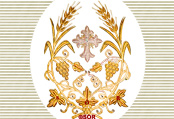
 |
|
||
| Saints & Fathers of the Syriac Orthodox Church |
|
Over the past two millenia, the Syriac Orthodox Church has produced innumerable saints and fathers whose exemplary spiritual lives, deeds, and works have inspired and continue to inspire the spiritual lives of the faithful to this day. While the Church shares the great saints of the early Christian centuries with all or some Churches, there are a number of saints of the Syriac tradition whose memory it alone commemorates. The Church never developed a formal process for proclaiming someone a saint; rather a holy person came to be regarded as a saint by popular acclaim. The memory of a holy person would begin to be commemorated locally in liturgical services and may become more widespread. The practice of reading of the "Book of Life" with the names of all orthodox bishops and the living or departed benefactors of the Church during the divine liturgy had emerged in the early Church. As Patriarch Aphrem I notes, the book contained a lengthy account of the redemptive works of our Lord followed by a list of Prophets, the Apostles, the Evangelists, the ancient doctors of the church, the illustrious chiefs of priests, the saints, the martyrs, the ascetics, the pious women of the Old Testament, the female martyrs, the virgins and ascetic women. It also included a record of the Patriarchs of Antioch, the Maphryonos of the East, the bishops of the dioceses in which this record was read and preserved, and names of eminent priests, deacons, monks, nuns, and men of charitable and religious endowment. Until the 11th century, the book was read during the divine liturgy on principal festivals after the Kiss of Peace or at least once a year and placed on the altar throughout the year. The names of the saints and doctors of the Church continue to be remembered in the divine liturgy in the canons (more commonly known as the toob-den from the words with which each begins toob den met`ahdinan ..., "Again we remember ..."). They are believed to have been formally compiled by Mor Ya`qub of Edessa (c. AD 633-708). Lives of holy men and women were also written, one of the earliest being the collection compiled by John of Ephesus, in the sixth century. Before the advent of printed liturgical calendars, different localities and dioceses maintained their own calendar of saints. In modern times, a core of saints appear in printed liturgical calendars and other commemorations are left to local usage and choice. The linked pages provide biographies of the saints, fathers, doctors and bishops of the Church from different parts of the Middle East and Malankara commemorated in the general liturgical calendars as well as the chronological list of the Patriarchs of Antioch. References: Patriarch Ignatius Aphram I Barsoum, The History of Syriac Literature and Sciences. tr. Matti Mousa. (Pueblo, CO: Passeggiata Press, 2000). Brock, Sebastian and David G.K. Taylor (ed.s), The Hidden Pearl: The Syrian Orthodox Church and Its Aramaic Heritage. (Rome: Trans World Film Italia, 2001). |
| Copyright © Syriac Orthodox Resources. All Rights Reserved. |
| Last Update: March 3, 2002 |